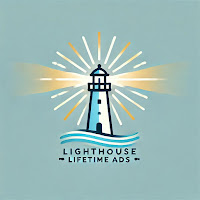Fix the Leak: Plugging Your Funnel With Better Support, Service and Follow-Up
In the world of digital marketing and sales, capturing leads and converting them is just the start. Many businesses lose customers because of leaks in their sales funnels — gaps where prospects slip away due to poor support, weak service, or lackluster follow-up. In this article, we'll explore how to identify these leaks and plug them effectively to maximize your funnel’s potential and boost customer lifetime value.
Why Funnels Leak and What It Costs You
A sales funnel guides potential customers through awareness, interest, decision, and action. But even the best funnel can leak. These leaks can come from:
- Poor customer support that leaves buyers frustrated
- Slow or inadequate service delivery
- Neglected follow-up sequences that fail to nurture leads
When leaks happen, your acquisition costs go up, and your ROI goes down — sometimes drastically.
Better Support: The First Line of Defense
Customer support isn’t just about answering questions; it’s about building trust. Quick response times, knowledgeable agents, and multi-channel support (email, chat, phone, social media) keep prospects engaged and confident.
- Automate what you can — use chatbots for quick answers but ensure a smooth handoff to human reps.
- Train your team on empathy and product expertise.
- Gather feedback regularly to fix recurring issues.
Service Delivery: Meet and Exceed Expectations
Your service delivery is where promises meet reality. Ensure that your product or service fulfills what your marketing has promised. Consistency and quality make customers stick and even advocate for you.
- Set clear expectations about timelines and deliverables.
- Use project management or CRM tools to track orders and progress.
- Communicate proactively if delays or issues arise.
Follow-Up: The Unsung Hero of Conversion
Follow-up emails, calls, or messages nurture leads and encourage repeat business. A strong follow-up sequence helps convert hesitant prospects and builds loyalty.
- Segment your audience to send personalized messages based on behavior and purchase history.
- Provide value beyond sales pitches — share tips, case studies, or how-tos.
- Include clear calls to action in every message.
- Don't forget to ask for feedback or reviews to improve your service and social proof.
Plug the Leak to Build a Stronger Funnel
By investing in better support, improving your service delivery, and implementing thoughtful follow-up, you close the gaps in your sales funnel. This leads to happier customers, lower acquisition costs, and ultimately, increased revenue. Start by auditing your current funnel to find leaks and then apply these strategies to plug them effectively.
RESOURCES
- HubSpot Guide to Customer Service
- Zendesk Resources
- Mailchimp’s Email Marketing Field Guide
- Salesforce on Follow-Up Techniques
What’s your take? Let me know in the comments HERE! ALL COMMENTS ARE MODERATED. KEYWORDS: FUNNEL LEAKS AND FOLLOW-UP
YOU CAN ALSO SEND US MESSAGES BELOW (FULL WEBSITE ONLY).
DUCK GROBBELAAR-SAMPSON
YOUR HOST
LATEST COMMENTS
No comments yet.




















